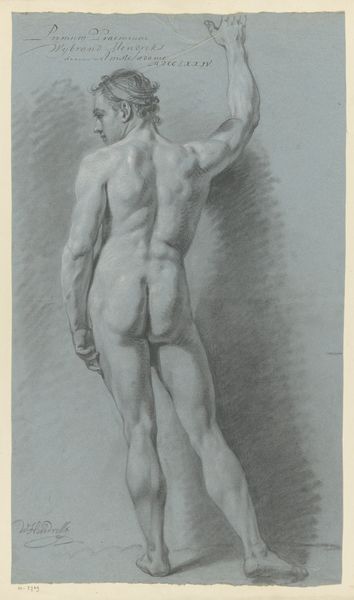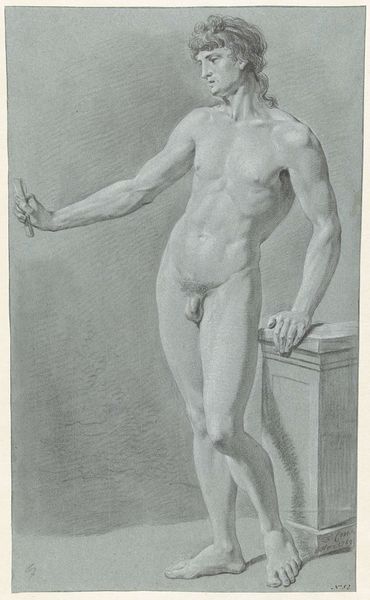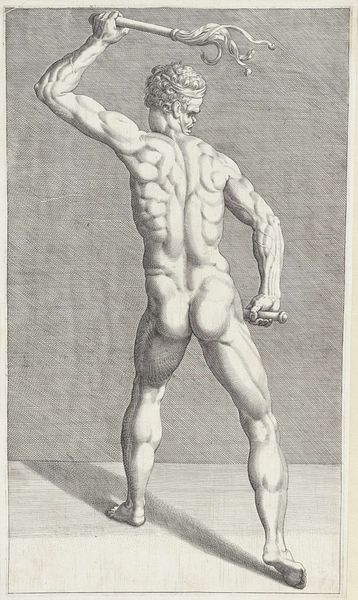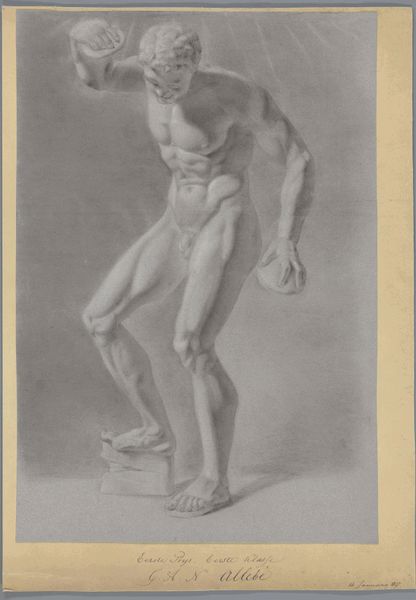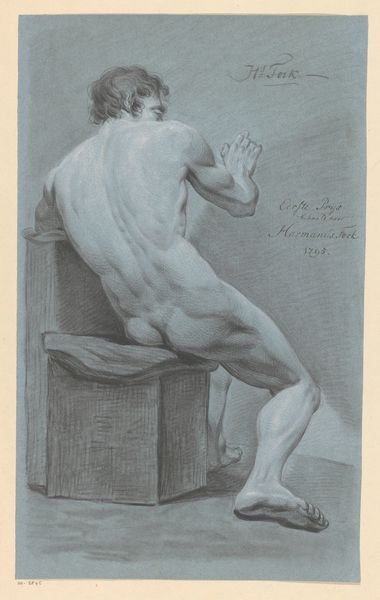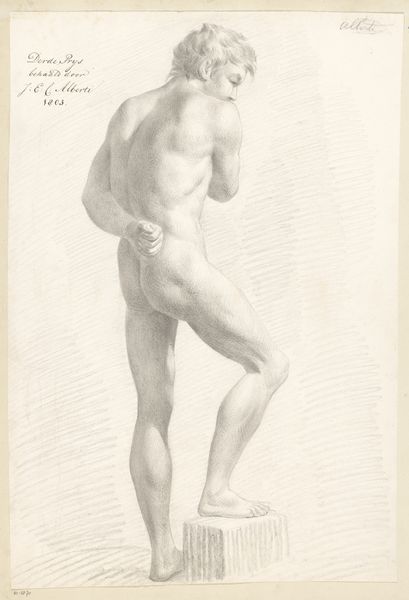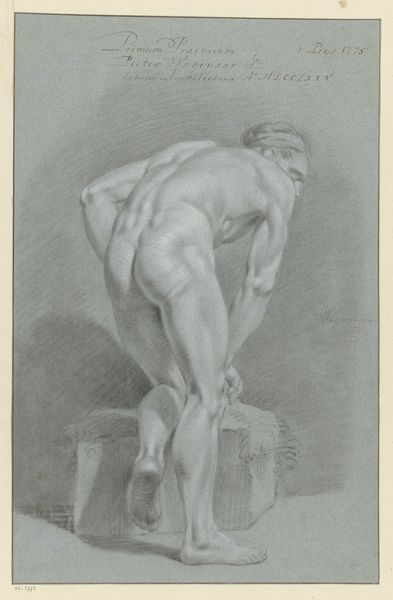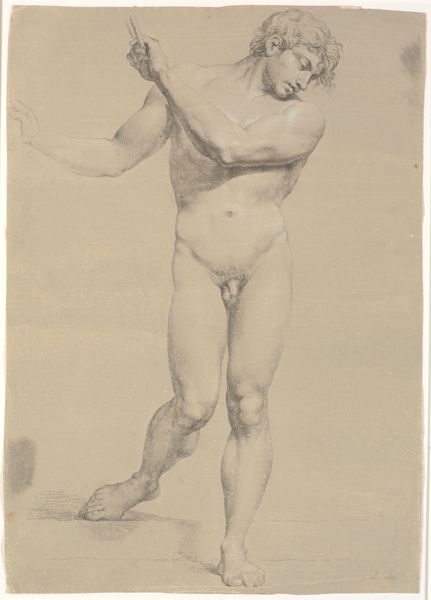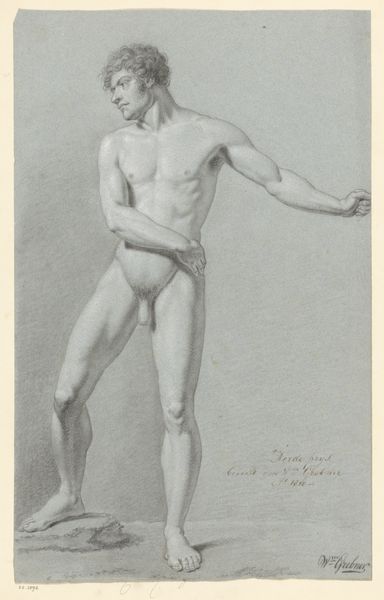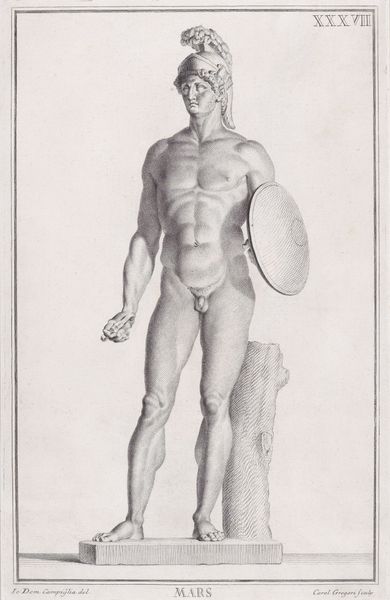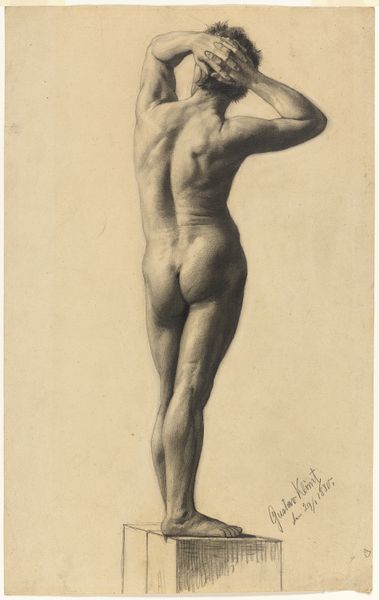
drawing, pencil
#
portrait
#
drawing
#
charcoal drawing
#
figuration
#
pencil drawing
#
pencil
#
academic-art
#
nude
Dimensions: height 545 mm, width 331 mm
Copyright: Rijks Museum: Open Domain
Johannes Joseph Maria Watrin made this chalk drawing of a standing male nude in 1813. It's a study, of course, and the pose suggests its function within the pedagogical system of the European academy. In the 19th century, the nude was promoted by academic institutions as the ultimate subject of art. Rooted in the classical tradition, the nude represented an ideal form, a triumph of reason and order over the chaos of raw nature. But what does it mean to study the male nude? How does the artist learn to see the body, and what does this process tell us about the way the human form is coded with social meanings? Notice how the man's body is muscular, but also smooth and idealized. Watrin subtly references classical sculpture, a canon promoted by the academy. To fully understand this drawing, we need to investigate the history of academic art education, including the changing roles of the nude. Only through an understanding of institutions can we begin to grasp the changing place of art in society.
Comments
No comments
Be the first to comment and join the conversation on the ultimate creative platform.

